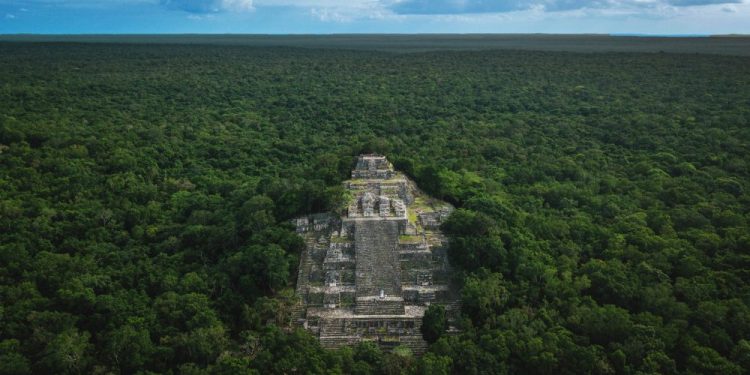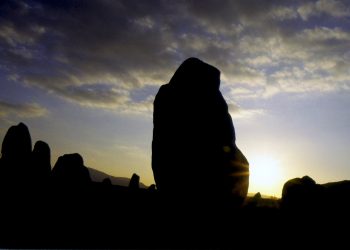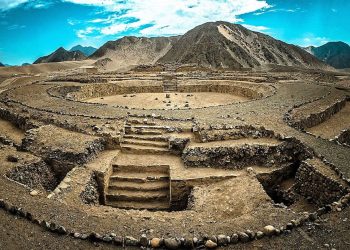Pyramids are a global phenomenon. For reasons we are not entirely sure of, around 5,000 years ago, humankind started building pyramids. These majestic structures are found on nearly every continent on Earth. There are pyramids in Africa, Europe, Asia, and the entire American continent. Although the most famous pyramids are those in Egypt, more precisely, Giza and the Great Pyramid, many other pyramids are equally or even more stunning.
The oldest pyramids, according to mainstream experts, are those of Brazil. Built primarily out of seashells, the Brazilian pyramids are thought to have been built around 5,000 years ago by a mysterious yet obviously advanced society. Archaeologists estimate that as many as 1,000 pyramids existed at one point in Brazil. Today, only a handful remain, and those that still stand are barely recognizable as pyramids. The so-called Brazilian pyramids were destroyed in the past few decades because they were mistaken for hills or rubble.
The Brazilian pyramids were large structures, some of which were 160ft high, covering a base of more than 37 acres. The Brazilian pyramids were much more extensive than some examples of Egyptian pyramids in terms of volume. Such monuments suggest that the builders were a very organized society governed by stable rulers who had control over natural and human resources more than 5,000 years ago.
But pyramids were also built further north. Although not many people know, there are pyramids in Peru as well. One of the most ancient civilizations in South America originated in Peru. The city-state of Caral is a worthy example. It was a thriving metropolis around 4,600 years ago. According to scholars, Caral is one of the most ancient cities on the American Continent. Researchers believe that Caral, its temples, plazas, residential buildings, and pyramids are of great importance since embedded within their long history may lay the origins of the Andean Civilizations and the development of South America’s first cities.
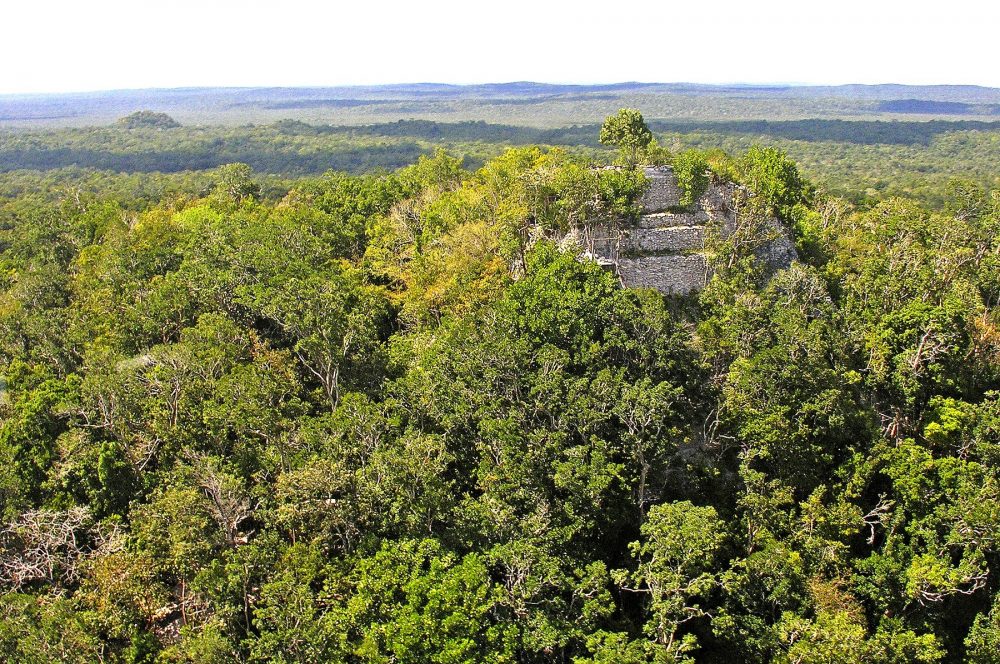
La Danta and El Mirador
One of the American continent’s most mind-boggling pyramids is in present-day Guatemala. Most people don’t know it even exists, although the pyramid is larger than the Great Pyramid of Giza in terms of size. The ancient city is now hidden beneath thick vegetation that has retaken what’s rightfully theirs. As per Pyramidomania, “the ancient city of the Maya is thought to have flourished from around the 6th century BC to the 1st century CE, and probably reached its height around the 3rd century BC.”
Archeological surveys of the site have revealed that the city of El Mirador—which translates into The Lookout—is home to as many as 35 triadic structures, which were built having a massive artificial platform, topped with as many as three summit pyramids. Two of the largest structure identified at El mirador are structures dubbed “el Tigre” with a height of around 55 meters, and La Danta.
La Danta is a truly massive pyramid. Standing as one of the largest ever erected in the Maya World, the pyramid measures 57 meters in height. Estimates of its total volume vary, but experts suggest that the structure has a total volume of more than 2,800,000 cubic meters, which makes it one of th largest in the world, interestingly, even larger than the Great Pyramid of Giza, which has a total volume of 2,583,283 cubic meters.
If we consider the massive human-made platform atop which the pyramid was built, La Danta becomes one of th most massive ancient structures ever built by humans in history. The platform atop which the Pyramid stands is approximately 180,000 square meters.
Building such a monument in ancient times must have been a significant challenge, given the project’s technical difficulties. Nonetheless, the construction of the massive pyramid most likely occurred over several decades, through which the pyramid evolved from a smaller pyramid into its current, behemoth size.
Richard D. Hansen from Idaho State University has calculated the volume and labor expended in the construction of La Danta. Hansen has identified an amount of 6,730,769 working days of labor only in the transportation of the material (mud and stone) for the landfill, that is, 1,000 workers working 18.44 years exclusively in the landfill transport.
The largest on Earth
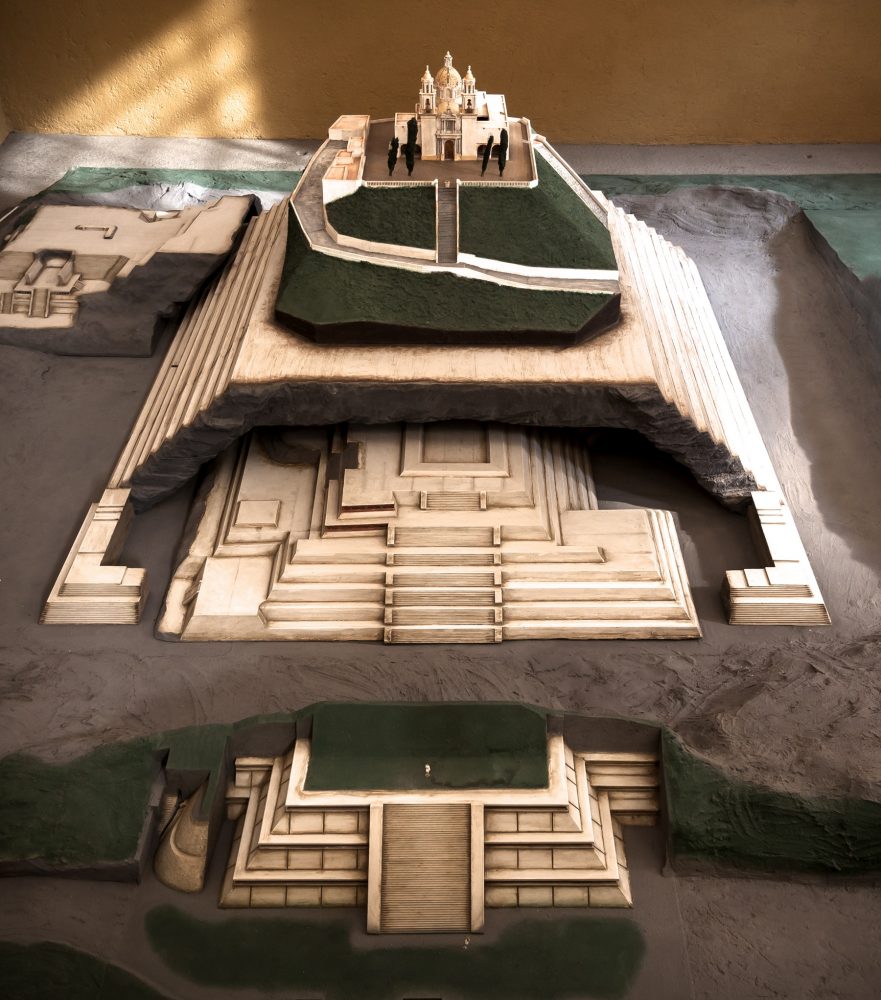
The Largest Pyramid on the planet’s surface is an ancient monument located 101 km (63 miles) southeast of Mexico City. It is 54 m (177 ft) tall, and its base covers an area of nearly 18.2 ha (45 acres). It was built in the distant past as a temple honoring one of the most important gods of Mesoamerican cultures, the feathered serpent. Known among the Maya as Kukulkan and among the Aztecs as Quetzalcoatl, the Pyramid at Chichen Itza was also built in his honor.
The Great Pyramid of Cholula is acknowledged as the largest pyramid and monument ever constructed anywhere in the world. According to archaeological measurements, the pyramid has an estimated total volume of 4.45 million cubic meters, even larger than that of Giza’s Great Pyramid in Egypt, which is approximately 2.5 million cubic meters.
According to legends of the postclassic Aztecs, the Great Pyramid of Cholula was built by Xelhua, one of the seven giants in Aztec mythology. A Dominican friar mentions both the Great Pyramid and Xelhua:
Before the great inundation which took place 4,800 years after the erection of the world, the country of Anahuac was inhabited by giants, all of whom either perished in the inundation or were transformed into fishes, save seven who fled into caverns. When the waters subsided, one of the giants, called Xelhua, surnamed the ‘Architect,’ went to Cholula, where, as a memorial of the Tlaloc which had served for an asylum to himself and his six brethren, he built an artificial hill in the form of a pyramid. He ordered bricks to be made in the province of Tlalmanalco, at the foot of the Sierra of Cecotl, and in order to convey them to Cholula he placed a file of men who passed them from hand to hand. The gods beheld, with wrath, an edifice the top of which was to reach the clouds. Irritated at the daring attempt of Xelhua, they hurled fire on the pyramid. Numbers of the workmen perished. The work was discontinued, and the monument was afterwards dedicated to Quetzalcoatl.
The oldest pyramids
After having gone through the Great Pyramid of Cholula and its equally striking counterpart in Guatemala—La Danta—we return to Brazil, where the oldest pyramids on Earth are supposedly located. It is believed that around one thousand pyramids existed at one point in present-day Brazil. However, given their age and the fact that these pyramids were built of soil and seashells, many crumbled in time, ultimately losing their pyramidal shape. Many other Brazilian pyramids were destroyed in modern times, as people thought the pyramids to be no more than rubbish or hills.
Nonetheless, some of the largest examples remain today, and they look like massive hills. One of the largest pyramids in Brazil is a structure located not far from the modern town of Jaguaruna. The pyramid is truly gigantic and covers an approximate area of 25 acres. The pyramid is once believed to have stood more than 167ft high. However, experts have revealed that there were even larger pyramids in Brazil at one point. Some of the largest structures erected in Brazil are thought to have covered more than 35 acres at one point, which means some of the Brazilian pyramids were much larger than their Egyptian counterparts.
The Brazilian pyramids had temples on top of them, which is curiously a feature that would appear in later Central American pyramids built by civilizations such as the Maya. The Brazilian pyramids are between 3000 and 2000 years older than some pyramids in Central America.
Join the discussion and participate in awesome giveaways in our mobile Telegram group. Join Curiosmos on Telegram Today. t.me/Curiosmos



